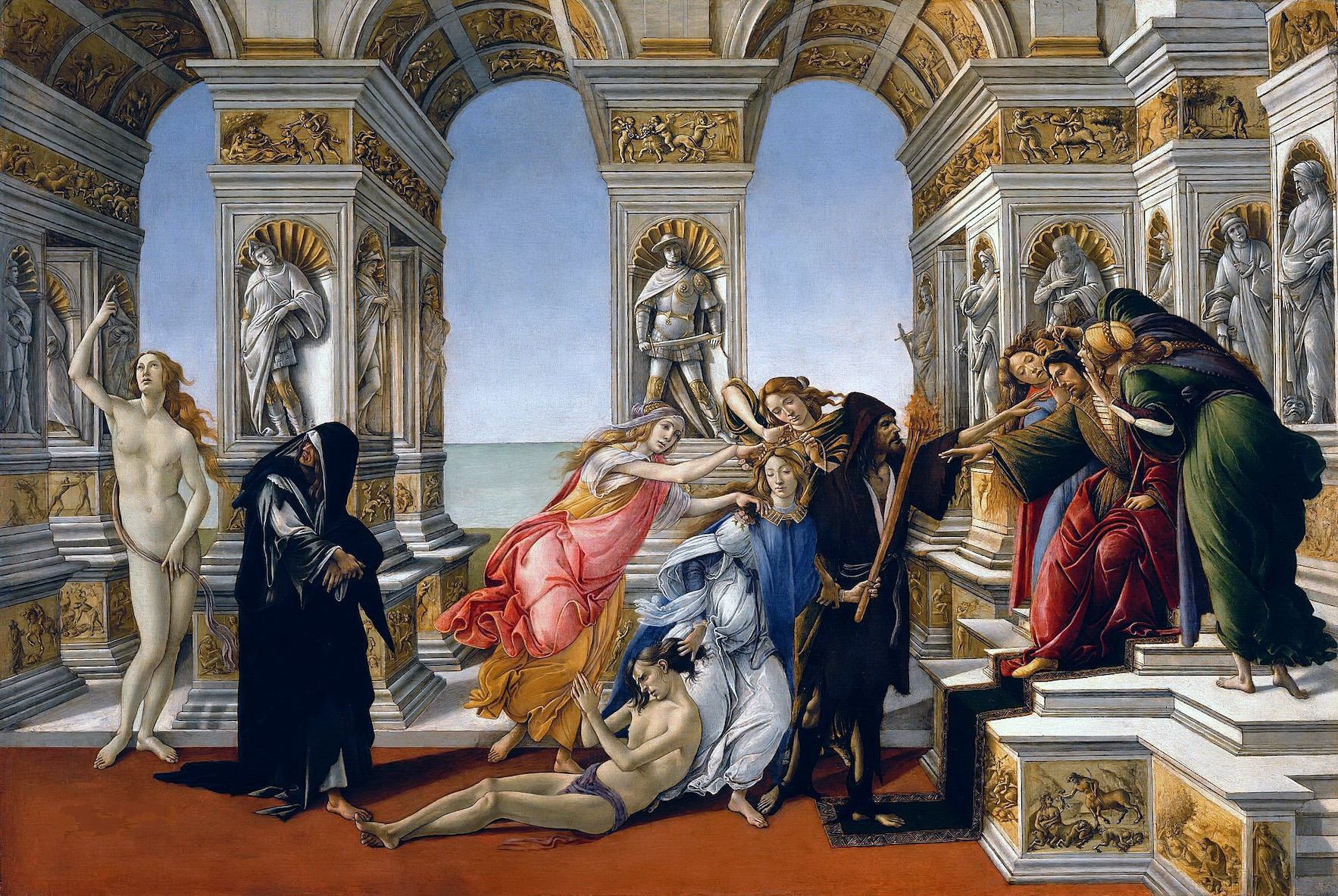Italian renaissance art: an introduction
Read Now >Chapter 47
Art in the Italian Renaissance Republics, c. 1400–1600
It’s not very romantic to admit, but before the modern age, artists rarely had the option of making art solely for the pleasure of creation. As Gianni Versace famously noted:
Even Michelangelo got paid for doing the Sistine Chapel. To those artists who say they’re doing it for the love of art [today], I say: Get real.
In the Italian renaissance—as today—art making cost money. Materials were expensive and so were studio spaces and assistants. The creations that we place today in museums as objects of “art” for aesthetic contemplation had specific functions in the renaissance world—being pleasurable or interesting to look at was of secondary concern.
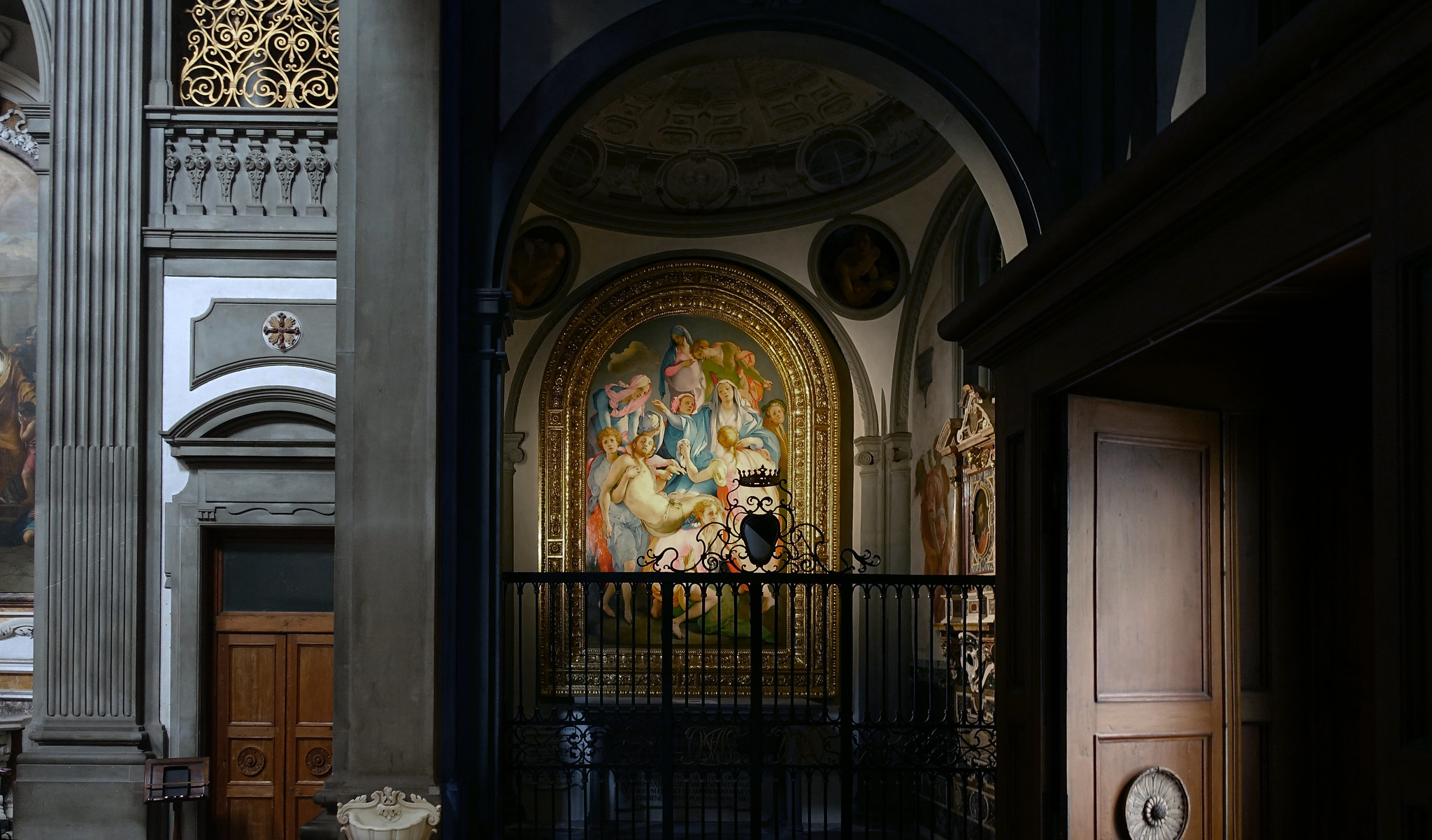
Pontormo (Jacopo Carucci), Deposition (Entombment), 1526–28, oil (with tempera?) on panel (Capponi Chapel, Santa Felicita, Florence)
Religious images guided the faithful to salvation. Portraits modeled virtue and celebrated ties of kinship. Stories of heroism, tragedy, and romance guided social behaviors. Ornamentation and style advertised wealth and taste. Artistic production thrived and innovation flourished only with massive investments of both time and money: it required investors. In the Italian city-states, these investors were the social and economic elite who patronized art and architecture as part of their civic duties, as declarations of faith, and as demonstrations of their discernment and virtue.
This chapter looks specifically to art made in republics, where some of the most innovative Italian renaissance art developed.
Introduction to art in Italy, c. 1400–1600
Italy did not exist during the period that we call the Renaissance (roughly 1400–1600 C.E.). The modern nation-state that we know today as Italy wasn’t born until the late 19th century. Nor were there such people as “Italians.” Instead we had Florentines, Venetians, Romans, Genoese, Sienese—a person’s identity was tied to the specific city-state or region in which they lived. Although interconnected through social, economic, and political networks as well as a shared ancient Roman past, the Italian city-states were largely independent from one another. Each had its own dialect as well as distinct political and social formations and cultural traditions.
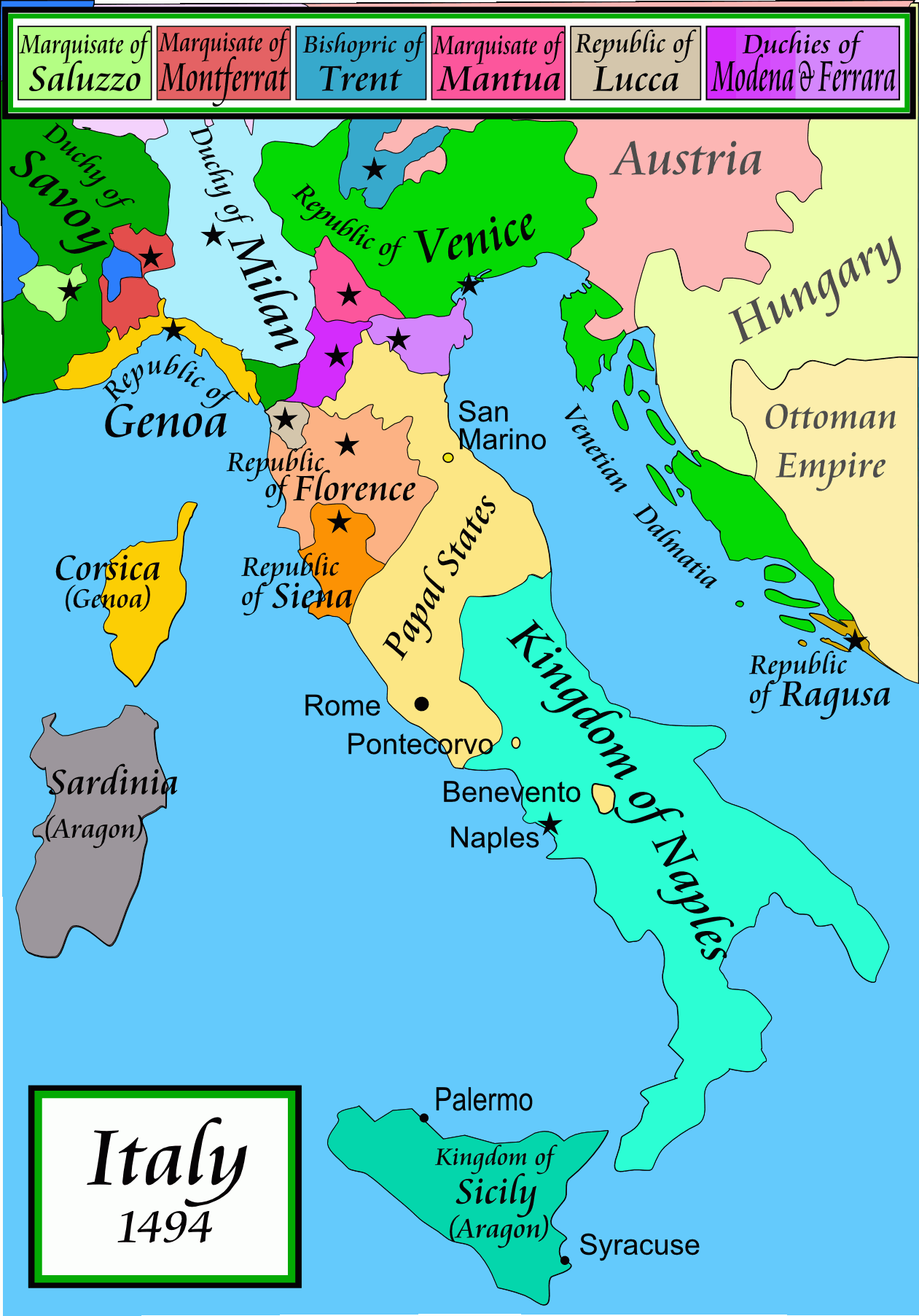
Map of Italy in 1494 showing republics and sovereign states.
So, if there is no such thing as “renaissance Italy,” there can’t be “Italian renaissance art,” right? Right! Well, technically anyway. While we often frame our considerations of art produced by people living on the Italian peninsula between 1400 and 1600 as “Italian renaissance art,” this generalization can be misleading. Florentines living in 1500 certainly did not see themselves (or their art) to be the same as their Venetian peers. Try asking a New Yorker how much they have in common with a Los Angelino and you’ll get some idea of what I mean. That said, there are shared qualities of form and content across the peninsula (artists traveled and so did styles and subjects) that allow us to recognize general “Italian” trends making “Italian renaissance art” a useful if imperfect designation.
There were three main types of political organization amongst the Italian city-states:
- territories that functioned as republics with governors elected from among the social and economic elite
- sovereign states, governed by a despot who had almost absolute authority; and
- the Papal States, regions under the direct governance of the Catholic Church and headed by the Pope.
These categories were not strictly fixed. The Republic of Florence, for example (founded in the twelfth century), ceased to exist in 1532 when the powerful Medici family came to rule the city-state as dukes, owing their allegiance to the Holy Roman Emperor.
Just like today, the political organization of a renaissance territory had a big impact on people’s lived experiences. It is one thing to be the subject of a king, it is very different to be an elected official in a republic. The same can be said about art. Imagery created within a republican context develops differently than that created in a monarchy. While there are many ways to approach the visual material of the past, this chapter considers visual arts produced in republican city-states between 1400 and 1600. Another chapter looks at art made in sovereign states.
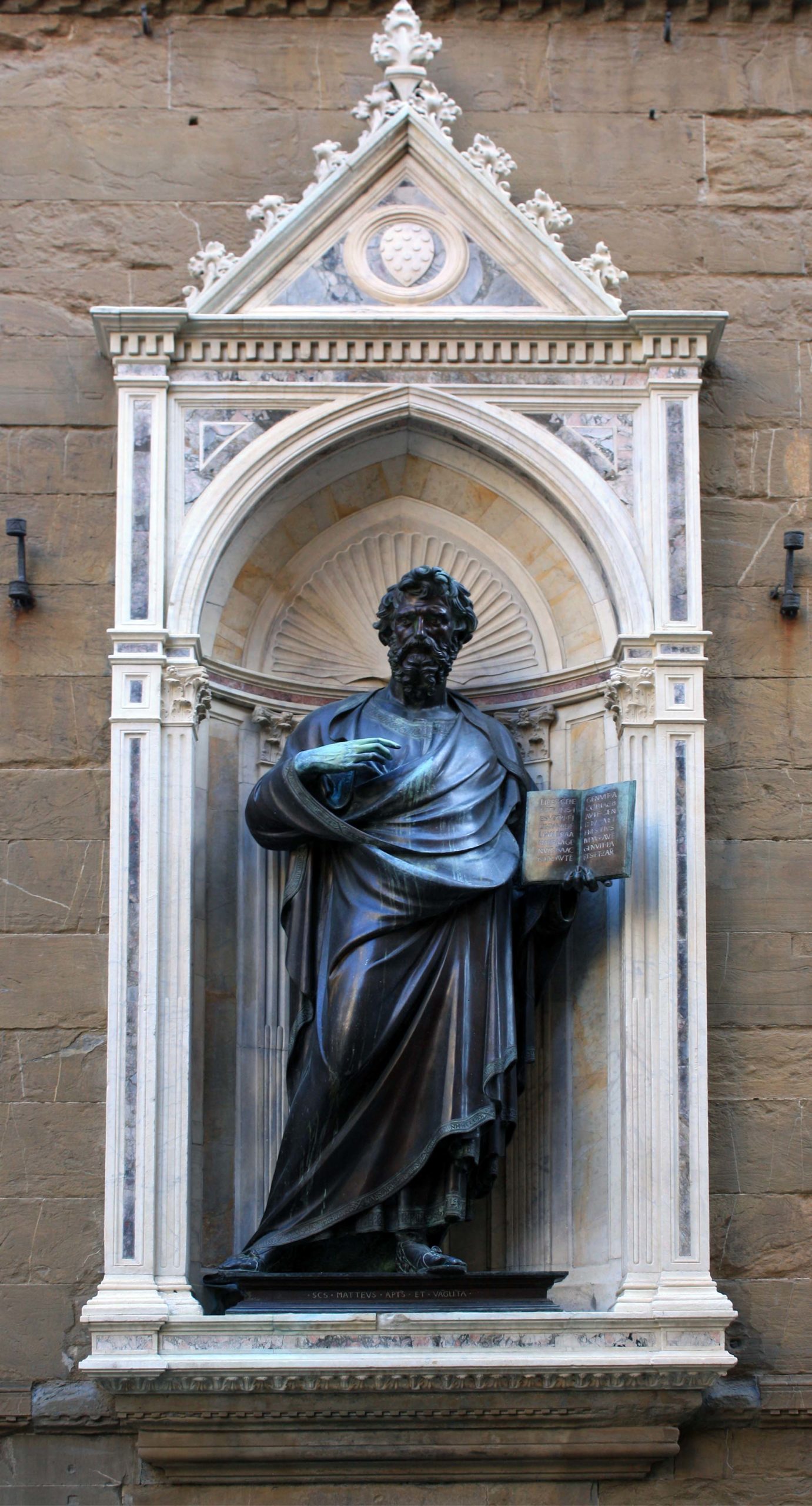
Lorenzo Ghiberti, St. Matthew, bronze, completed c. 1423, h. 254 cm, Orsanmichele, Florence (photo: Dan Philpott, CC BY 2.0)
Some of the most innovative Italian renaissance art came out of the competitive world of the republican city-states. In these communities, the governing class of merchants and bankers recognized the power of art and architecture to advertise their success and to showcase their superior wealth and aesthetic judgment. Merchants of good taste and bankers of sound resources inspired commercial confidence. Competition among merchants was also reflected in artistic competition, as when the powerful Florentine money changers guild specifically required Lorenzo Ghiberti to create a sculpture for Orsanmichele that would be bigger (better!) than the one he had just finished creating for the guild of cloth merchants. In their quests to out-do one another, the patrons of republican states helped foster considerable artistic novelty.
Before moving forward with this chapter, consult a helpful primer to learn more about the people, places, and objects we consider when we study what we call Italian renaissance art.
Read a helpful primer about the Italian renaissance

/1 Completed
What is a republic?
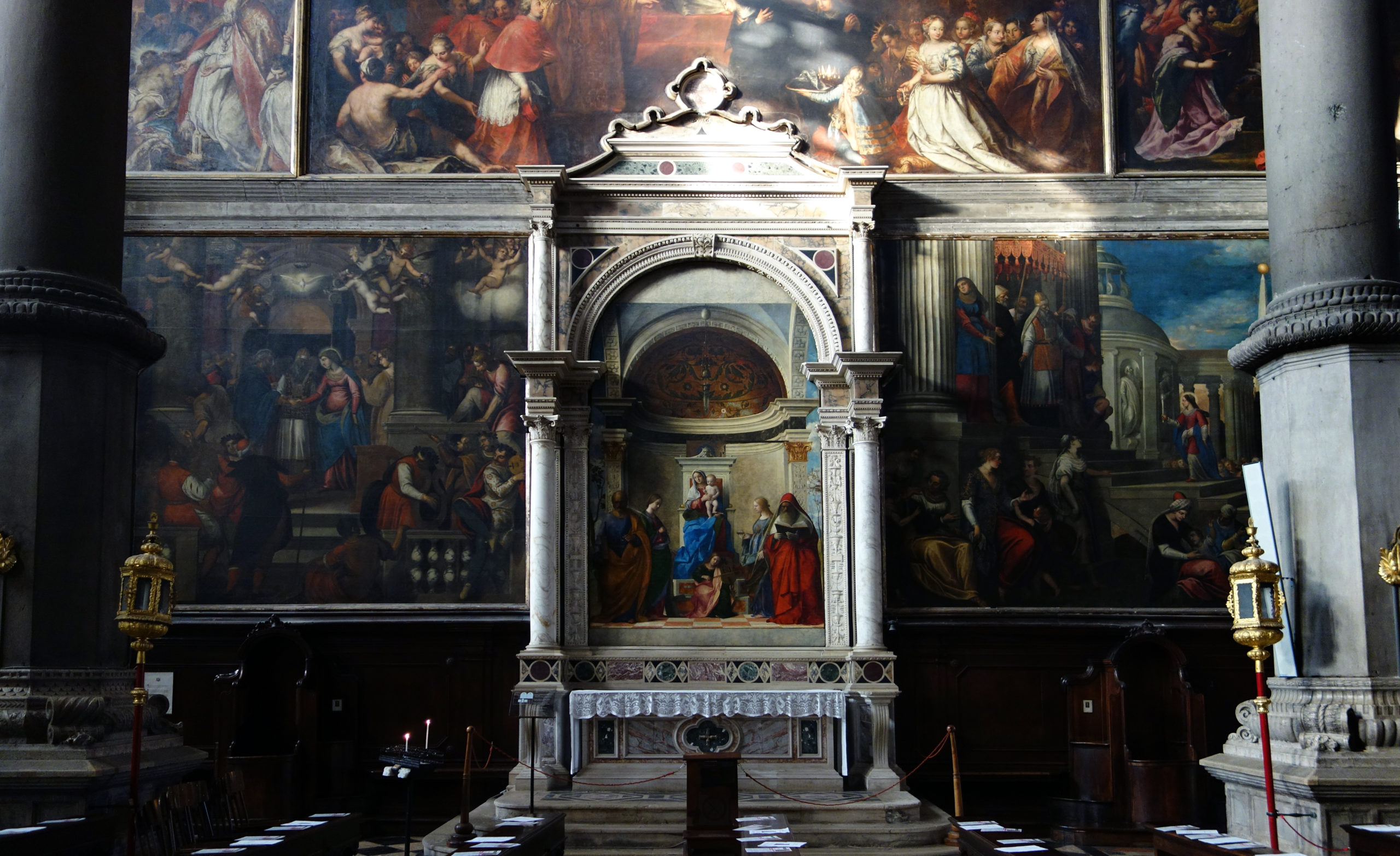
Giovanni Bellini, San Zaccaria Altarpiece, 1505, oil on wood transferred to canvas, 16 feet 5-1/2 inches x 7 feet 9 inches (San Zaccaria, Venice)
During much of the renaissance period, Italian city-states such as Venice, Genoa, Florence, and Siena had elected councils and called themselves comuni (or “commonwealths”). These republican states were oligarchies, meaning that political power was divided among a small group of the wealthy and socially mobile: merchants, bankers, noble families, and powerful guilds. Although their number and duration of terms varied, each city and its surrounding territory was governed by officials—elected by their social and economic peers—who held political office for a limited period of time. Laws were in place (although not always successfully) to limit the accumulation of power within the hands of a single individual or family. In all such states, the laboring classes (peasantry) had little voice in self-governance: it was the social and economic elite whose interests dominated.

Donatello, David, c. 1440, bronze, 158 cm (Museo Nazionale de Bargello, Florence; photo: Steven Zucker, CC BY-NC-SA 2.0)
Almost all surveys of Italian renaissance art start with Florence, and the developments that occurred there were also felt to varying degrees in other republican states, such as Venice, Siena, and Genoa. Florence had the key ingredients necessary for the production of serious art: political stability, money, ambition, and rivalry. Administered by a small, wealthy oligarchy, early renaissance Florence was the center of European finance and home to rising capitalism. Eager to be seen at the avant-garde of fashion, taste, and success, the wealthy bankers and merchants who dominated Florence readily patronized visual art and architecture reflecting the glory of the ancient Roman tradition, popularized by the new intellectual movement known as humanism. Art that demonstrated foundations in the science and philosophy of Roman antiquity and its associated republican values flourished here. Artists competed with one another for commissions from powerful patrons, while, in turn, those same patrons competed amongst themselves to hire the most accomplished and innovative artists. What one paid for was a public declaration of one’s identity—the more marvelous and ingenious the works patrons collected and displayed, the more exalted their social status and the more precious their contributions to both God and City. Rivalry between artists, between patrons, between past (ancient Rome) and present, typifies art produced in republican contexts and spurred the rise of the Renaissance.
Art in Public Spaces
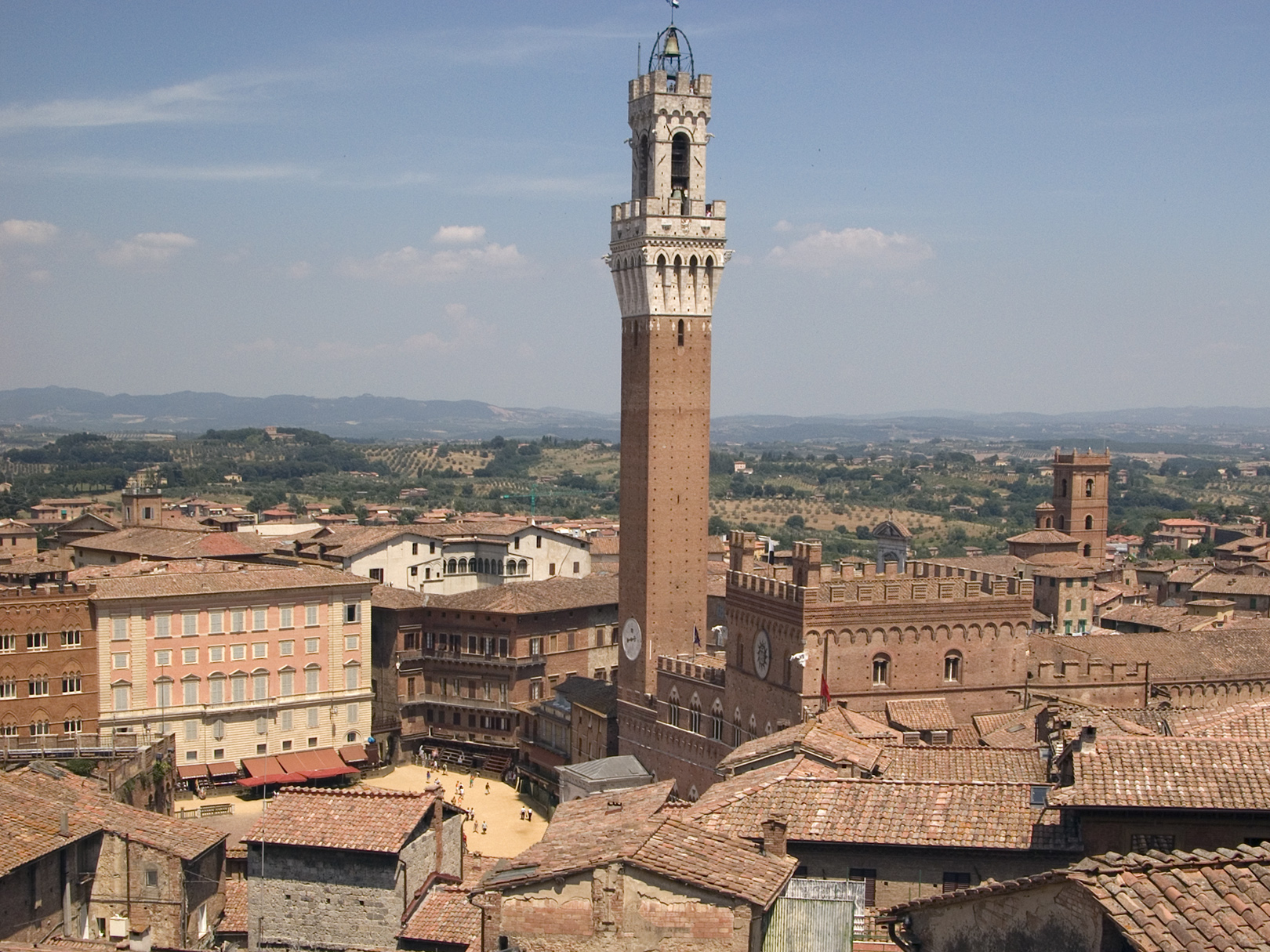
View of the Piazza del Campo, Siena (photo: Steven Zucker, CC BY-NC-SA 2.0)
The renaissance city was like a stage, its streets, piazzas, art, and architecture were visual manifestations of an urban identity. Florence’s spectacular Duomo, Venice’s opulent Palazzo Ducale, Siena’s winding streets and hilltop views—these sights spoke to the unique character of each city and its people. In a world in which there was no separation between Church and State, all art placed within the public sphere served to glorify both spiritual and secular powers. The town hall as much as the parish church were sites of devotion—God and his saints, the very hierarchy of heaven, provided the ideal template for city administration. The city had to look the part.
Art in public churches
Italian cities bristled with churches. The rise of new religious orders (such as the Dominicans and Franciscans) in the late Middle Ages and growing populations needing pastoral care meant that church building was a major part of urban development. A church was both a place of worship and a social hub. Of course, church architecture and the art displayed within was intended first and foremost to guide Christians in their faith and serve the glory of God. It didn’t hurt, however, if the art and architecture also reflected the exemplary tastes and erudition of the wealthy individual or prestigious guild paying for it.
Watch videos and read about art in public churches
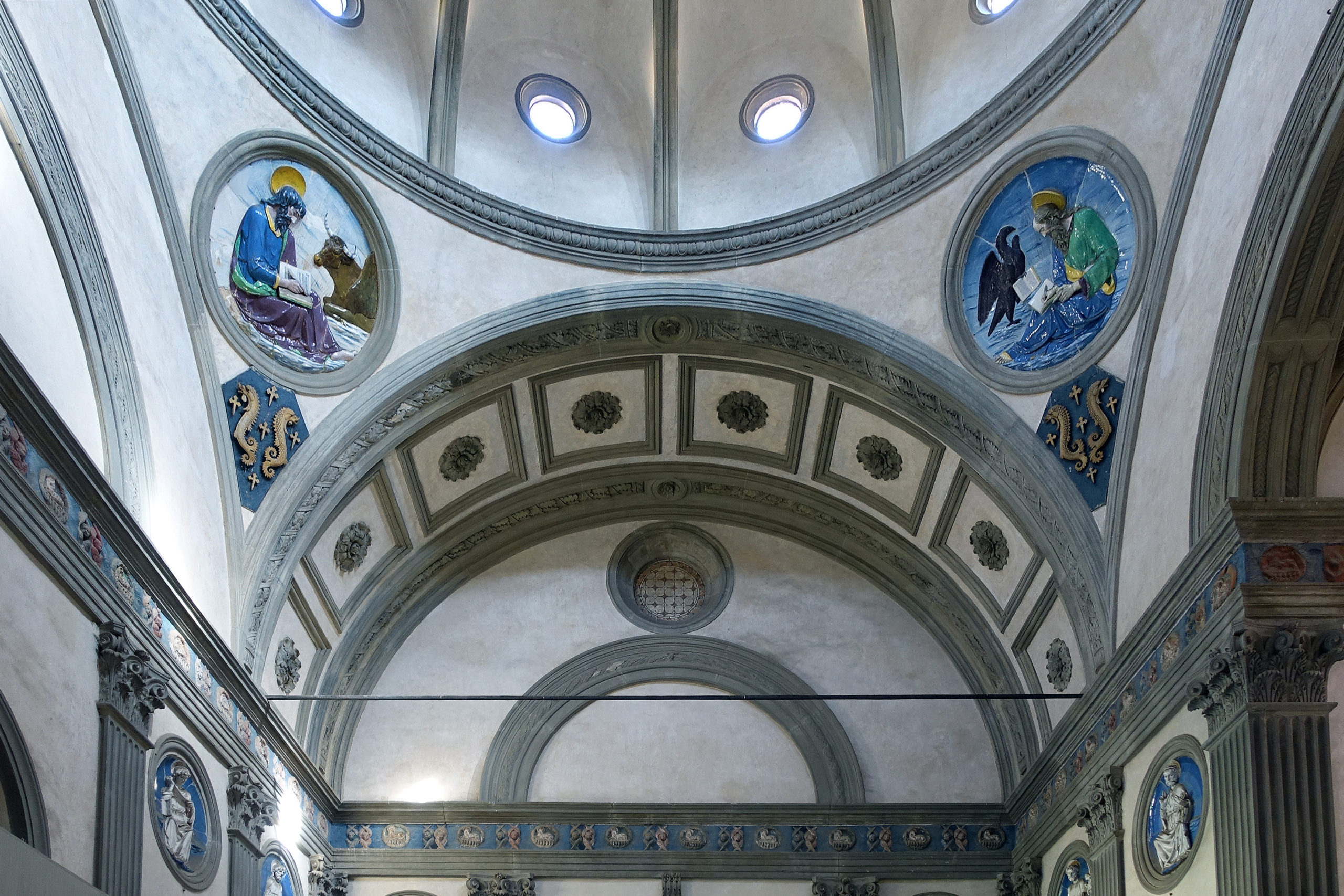
Filippo Brunelleschi, Pazzi Chapel, Florence: A central dome dominates this space, while greyish-green stone articulates its perfect geometry.
Read Now >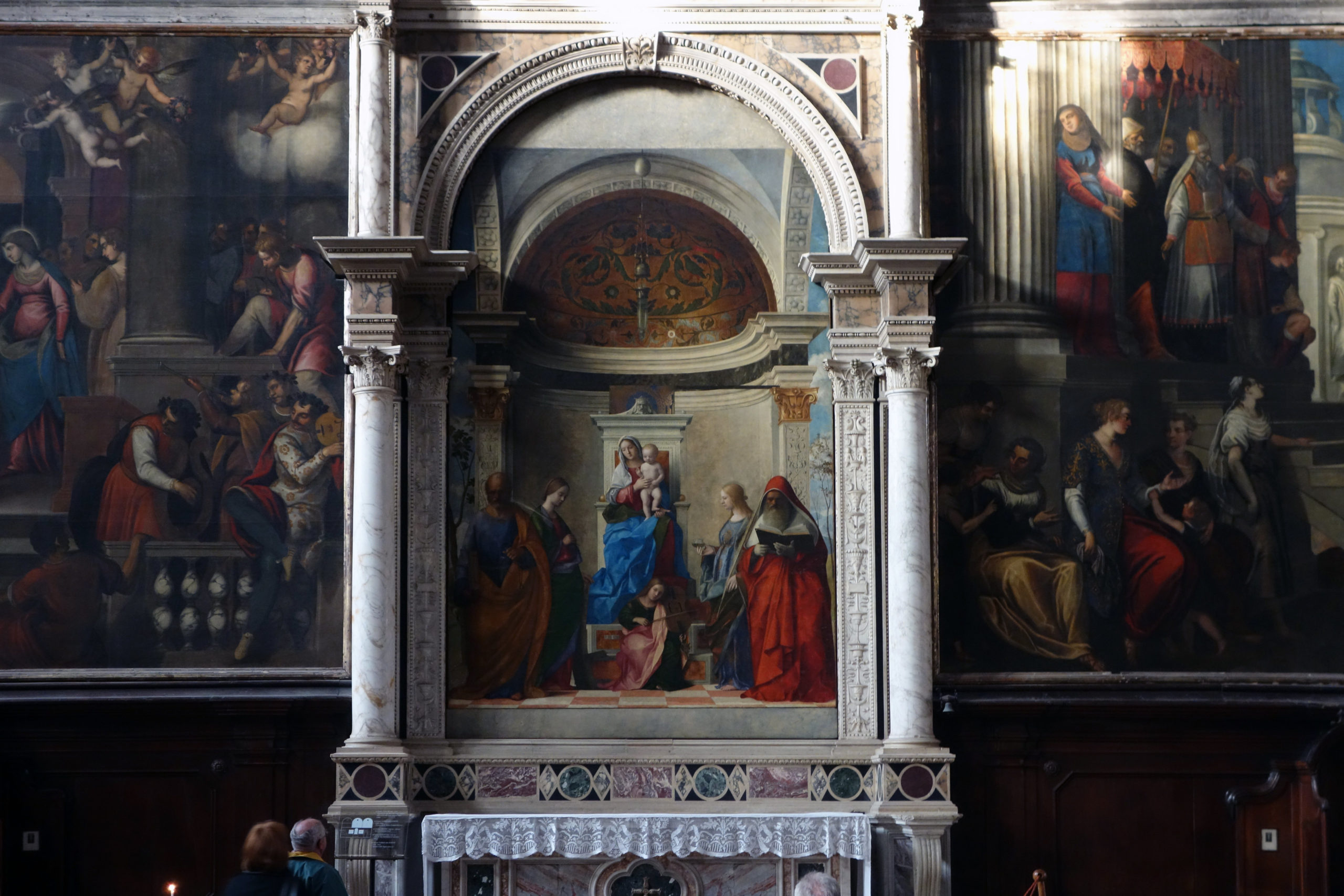
Giovanni Bellini, San Zaccaria Altarpiece: Bellini opens up this painting’s space, but holds the viewer at bay. The mood is calm, solemn, and contemplative.
Read Now >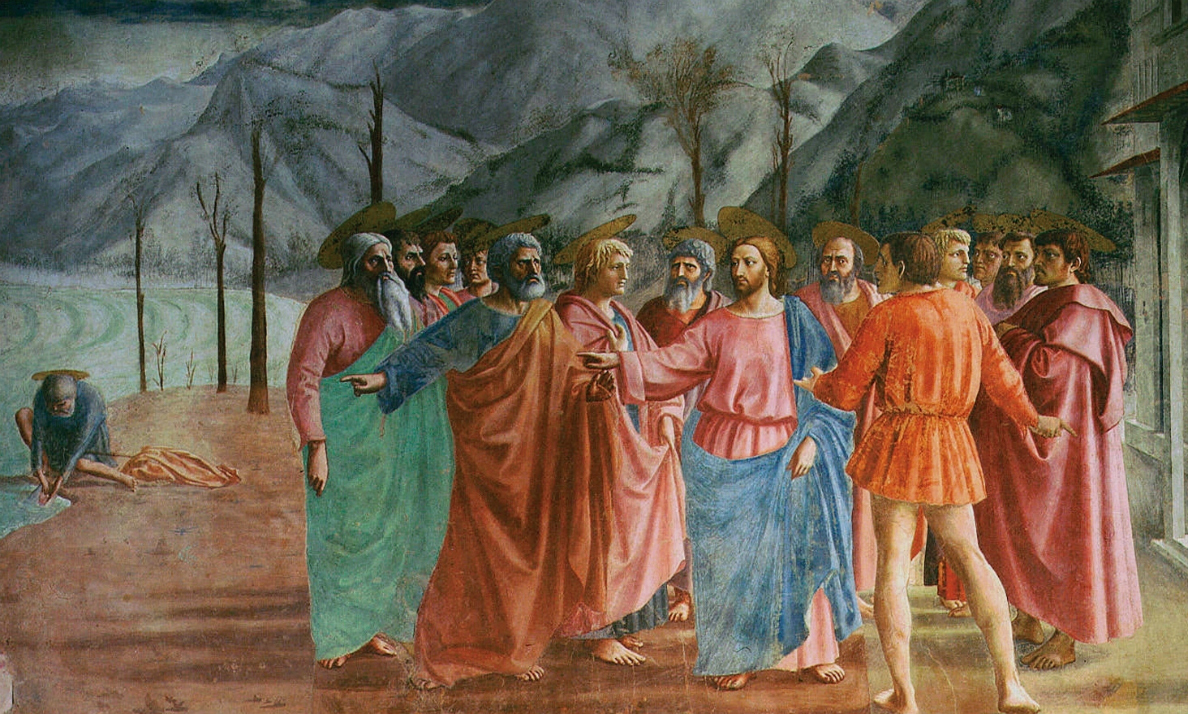
Masaccio, The Tribute Money and Expulsion in the Brancacci Chapel: Masaccio lends clarity to a complicated story through his masterful use of gesture, expression, and cast shadows.
Read Now >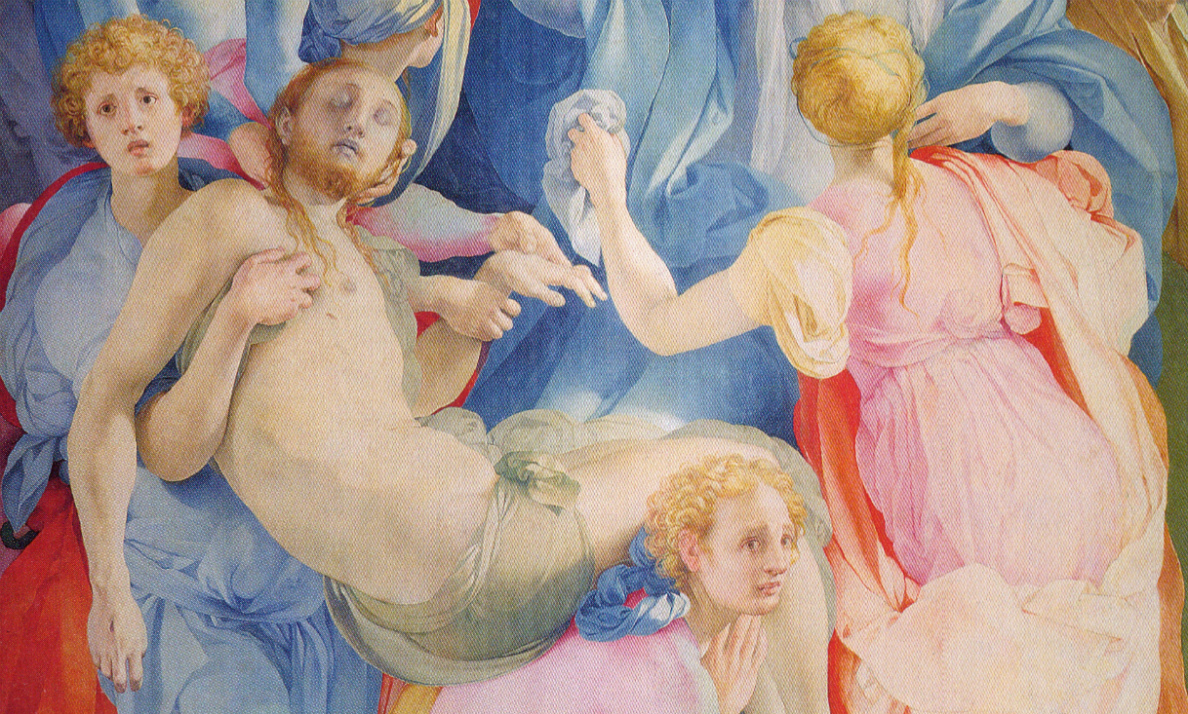
Jacopo Pontormo, Entombment (or Deposition from the Cross): This altarpiece lacks setting and symbols, but it’s hardly empty. Moving figures fill the space.
Read Now >/4 Completed
Religious art beyond (or just outside) the Church
Religious art was not just in churches. It permeated every aspect of the renaissance visual world. The Virgin Mary smiled down upon urban masses from street corners while colossal saints watched over bustling markets.
Watch videos about art just beyond the Church
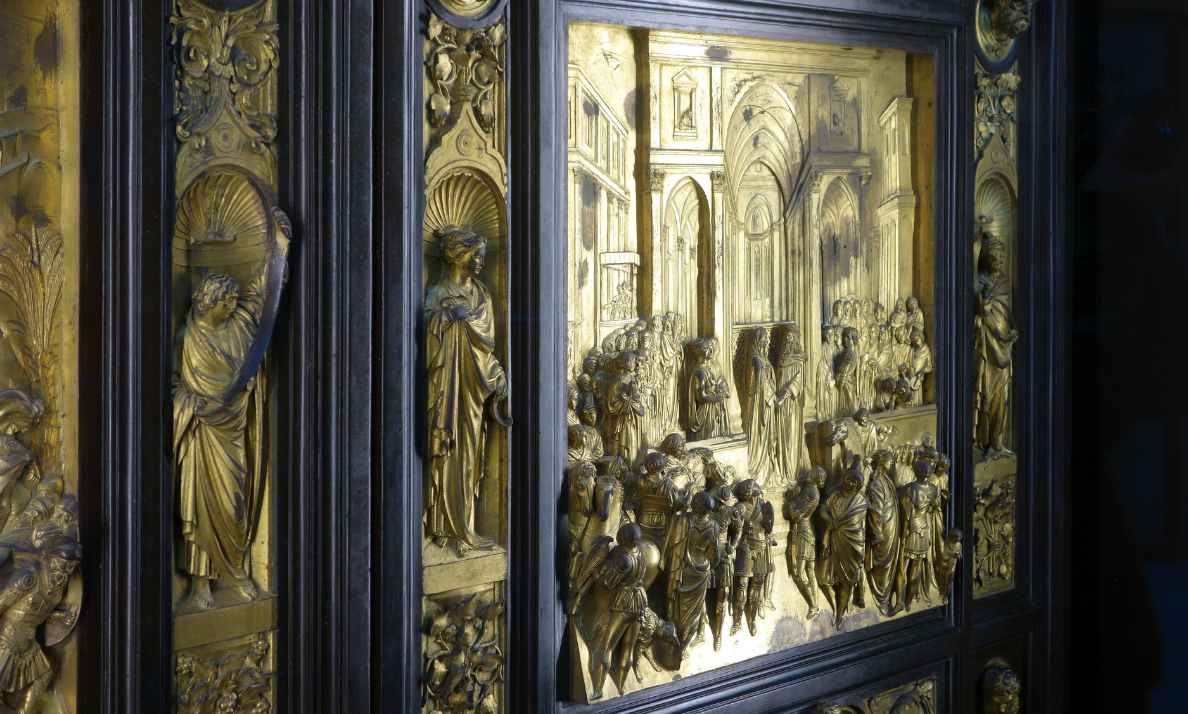
Lorenzo Ghiberti, Gates of Paradise, East Doors of the Florence Baptistry: These gilded bronze doors are a masterpiece of clarity and illusionism. Space coheres, and figures move with ease.
Read Now >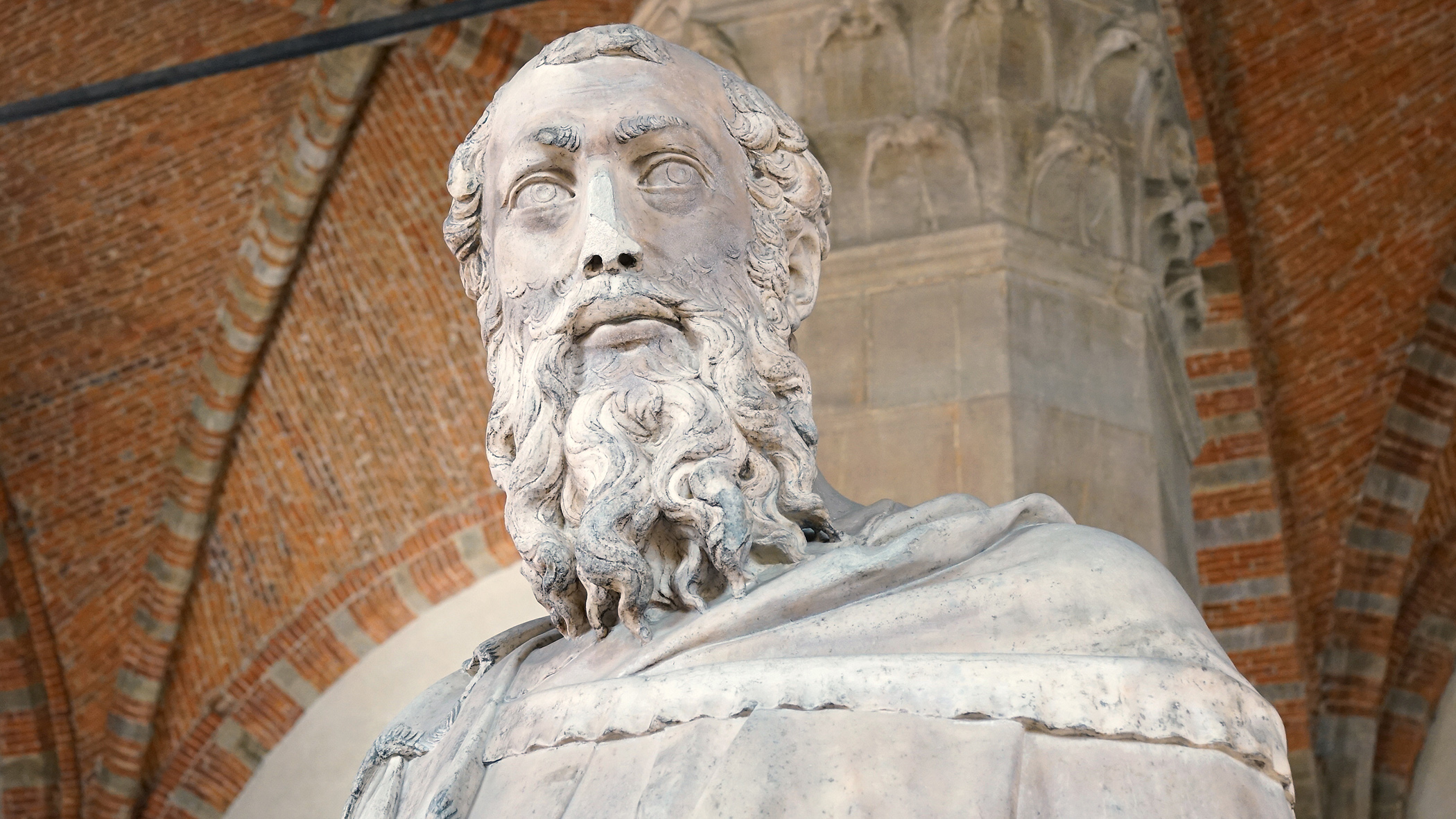
Orsanmichele and Donatello’s Saint Mark, Florence: From granary to—church? Once open to the city, this building and its niches blend the spiritual with the everyday.
Read Now >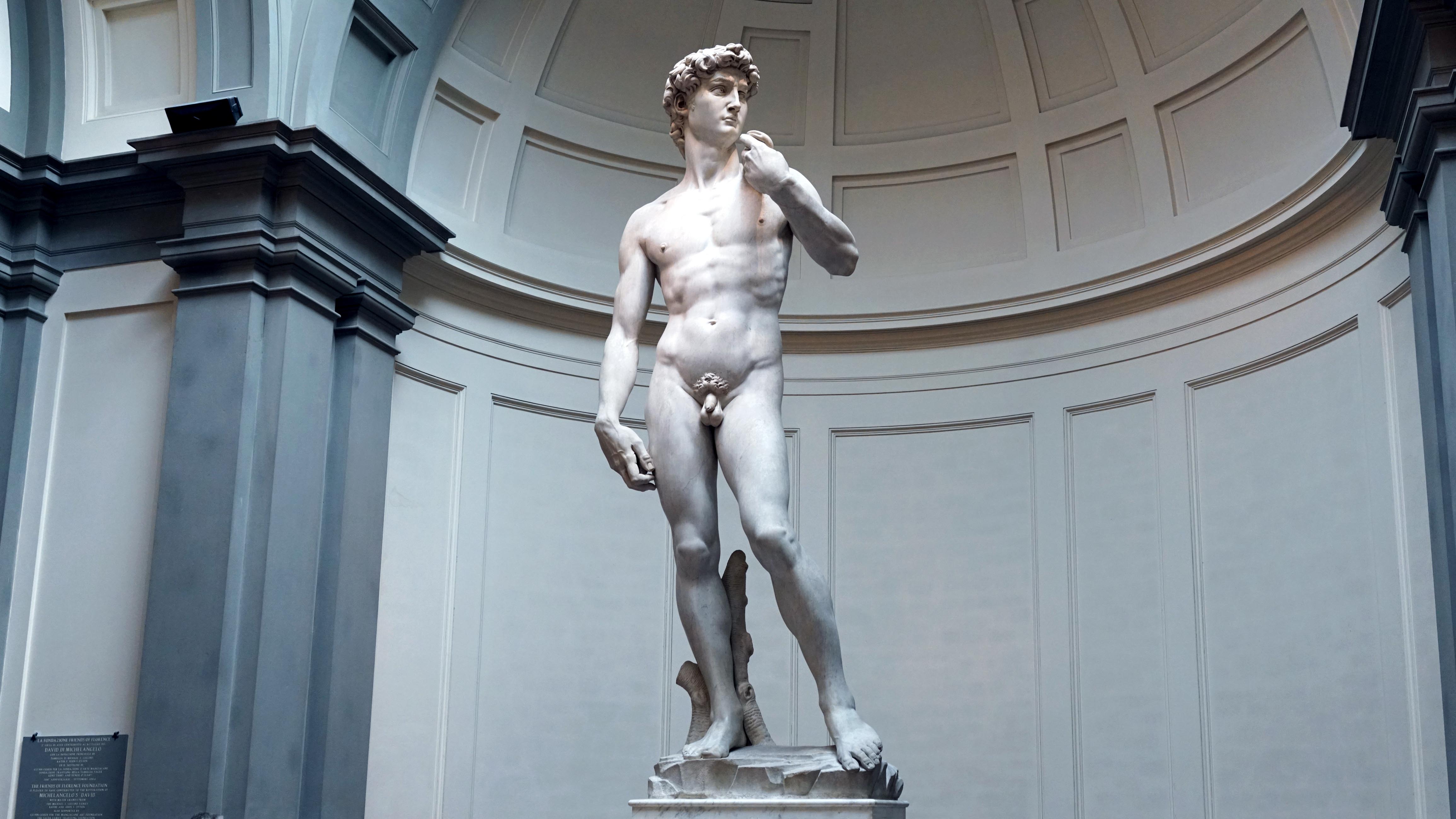
/3 Completed
Secular art in the public sphere
It wasn’t all religious art (even if we may assume that it was read through a Christian lens). Other genres of public imagery shared space with Christian subjects, sometimes in such close proximity that the symbiotic relationship between Church and State was explicit, such as with Donatello’s monument to the mercenary captain, Erasmo da Narni, placed conspicuously in front of Padua’s cathedral.
Watch videos about secular art in the public sphere
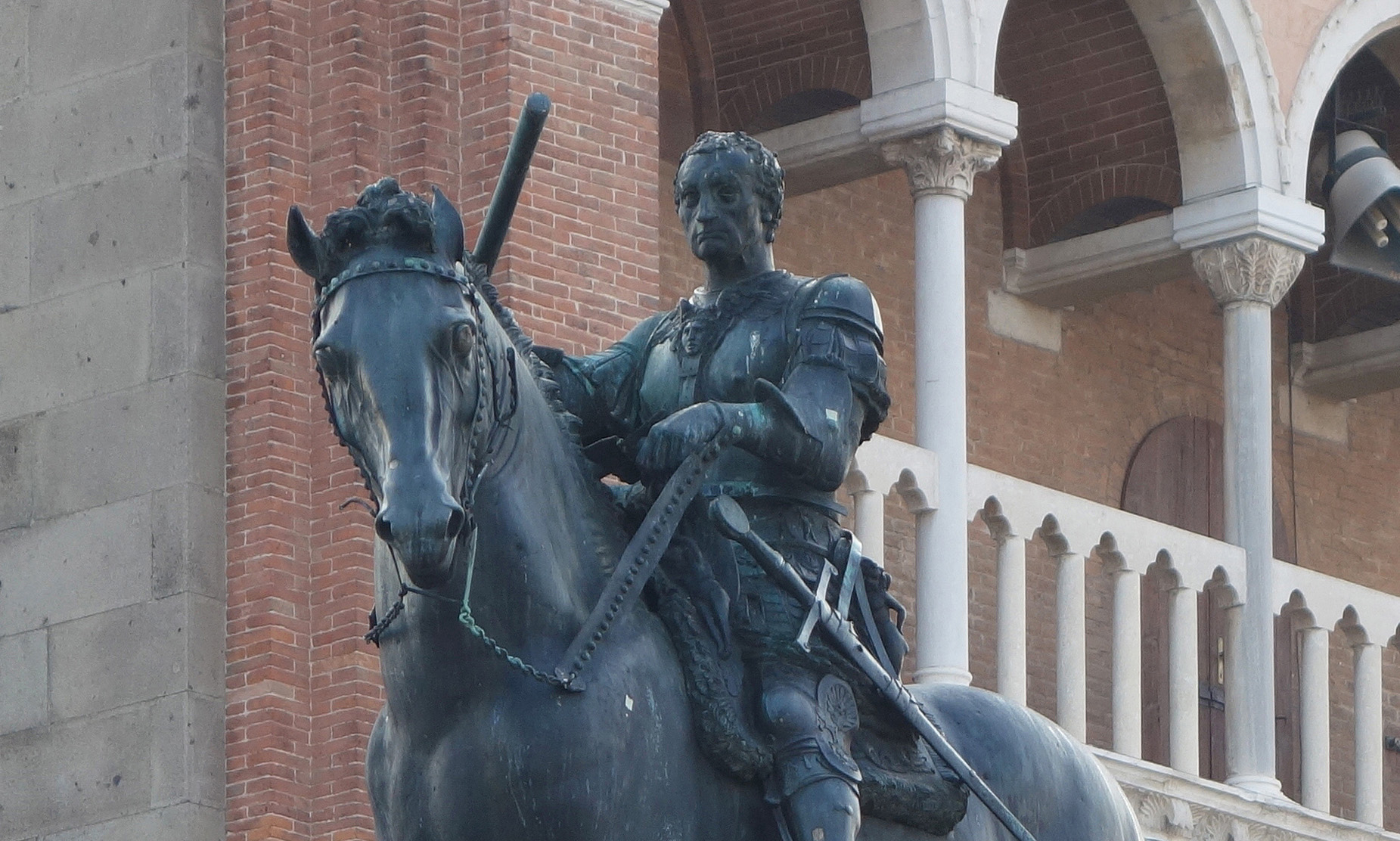
Donatello, Equestrian Monument of Gattamelata: A monument to the mercenary captain, Erasmo da Narni, placed in front of Padua’s cathedral.
Read Now >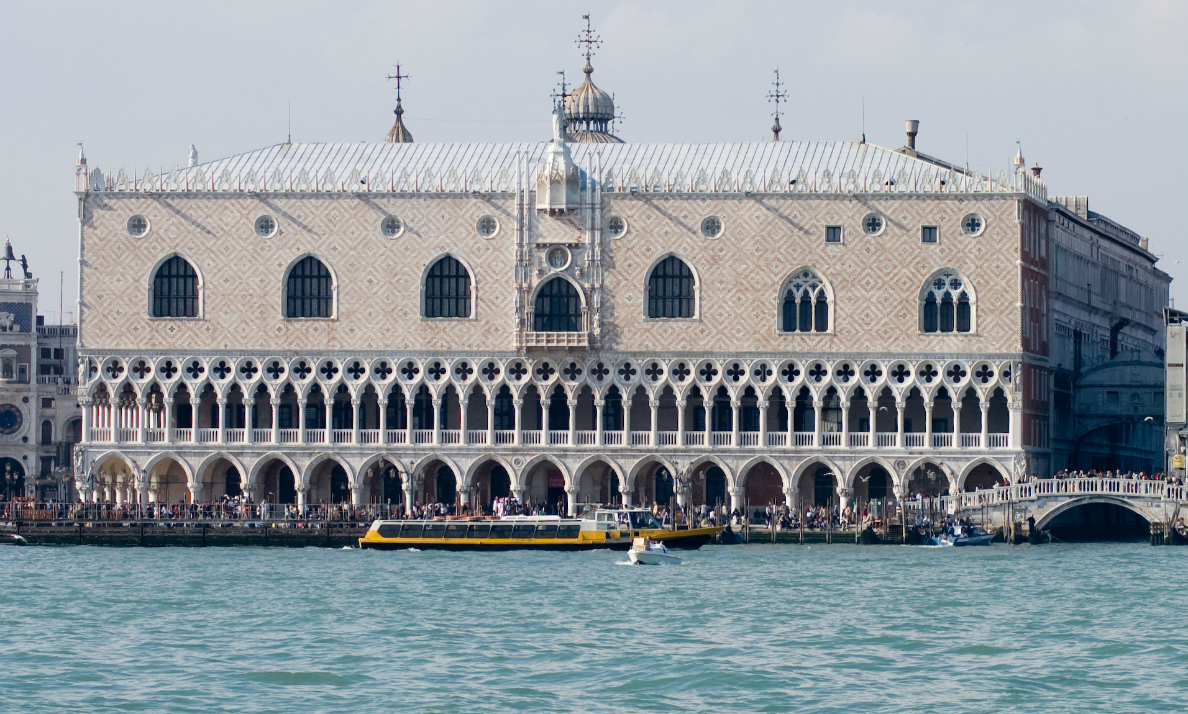
Palazzo Ducale: Open to the lagoon, this eclectic palace greets visitors with a rhythmic front.
Read Now >/2 Completed
Art in Private Homes and Palaces
The wealthy elites of the Italian merchant class who dominated the republican city-states could afford to live like aristocrats. They invested in palaces and feudal country estates and in a courtly lifestyle including all of the accouterments of aristocratic leisure.
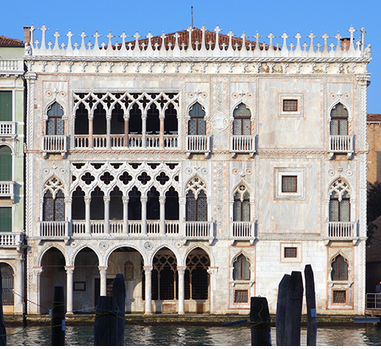
Ca’ d’Oro, 1422–40, Venice
Republican values of moderation, or the idea that private citizens should not seek courtly magnificence, sometimes meant that this lavish living was hidden behind closed doors. At other times it was put on full display as in the magnificent homes lining the glittering canals of Venice.
Nice digs
The design and decoration of the private home was understood to reflect the family who lived there. Family pride, political allegiances, and religious devotion were all on display. Homes were generally sparsely decorated by today’s standards, but included a broad range of objects from carved furniture and costly tapestries, to painted and sculpted portraits, frescoed walls, and sculpture in the round and in relief.
Read an essay and watch a video about private homes
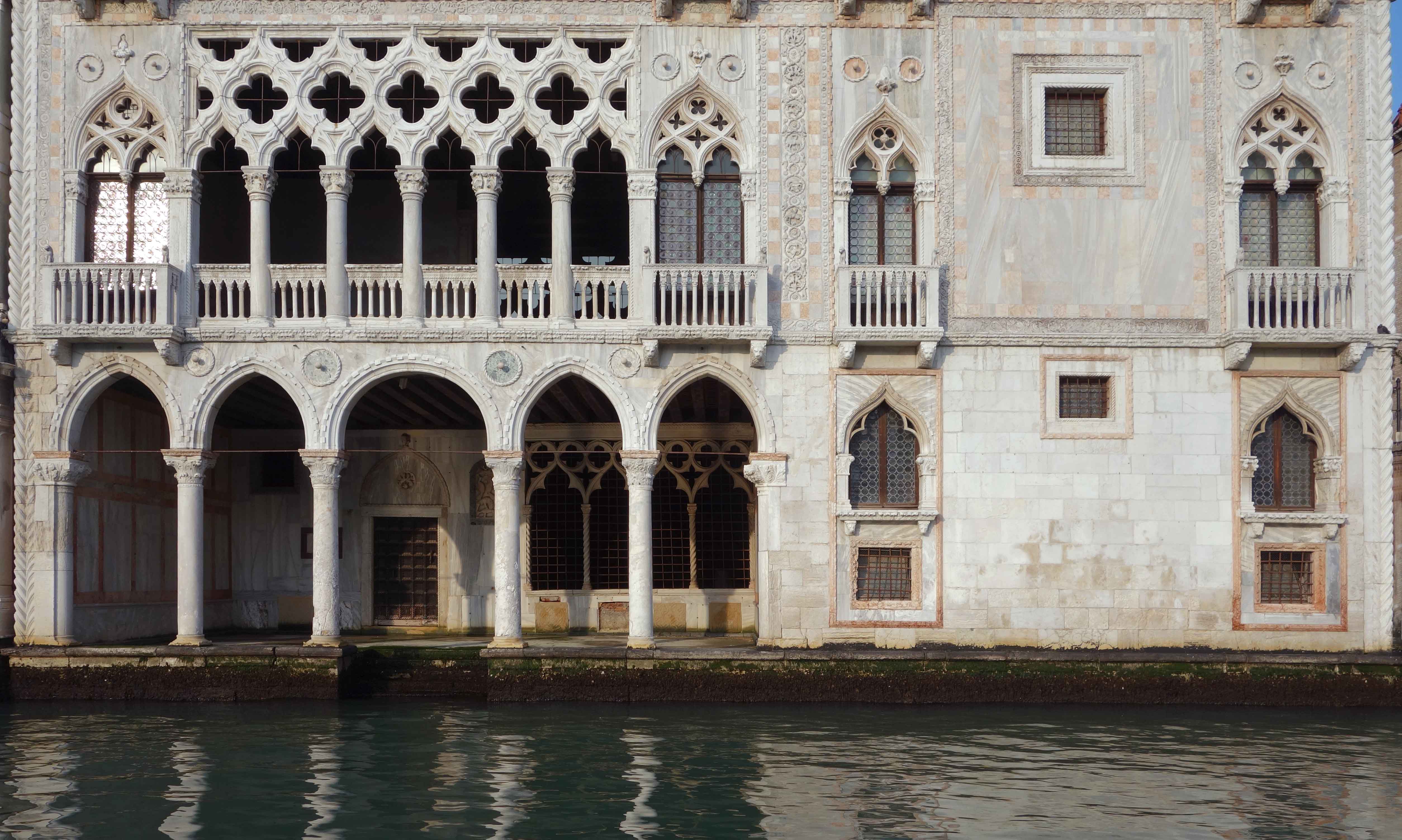
Ca’ d’Oro: The building was known as the Ca’ d’Oro—“House of Gold”—because its façade originally shimmered with gold leaf.
Read Now >
Leon Battista Alberti, Palazzo Rucellai: A marvelous palace built for a powerful family by one of the most famous architects of the time.
Read Now >/2 Completed
At home with friends and family
Contemplating works of art was an important pastime, and not just for religious purposes. Imagery that stimulated learned conversation, prompted contemplation of beauty or provided erotic pleasure were all valued in the domestic sphere. So too were images that celebrated and commemorated family and friends. The genre of portraiture was eagerly embraced by the republican merchant class, drawn like many up-and-comers to its pretensions of aristocracy.
Watch videos and read essays about art for the home
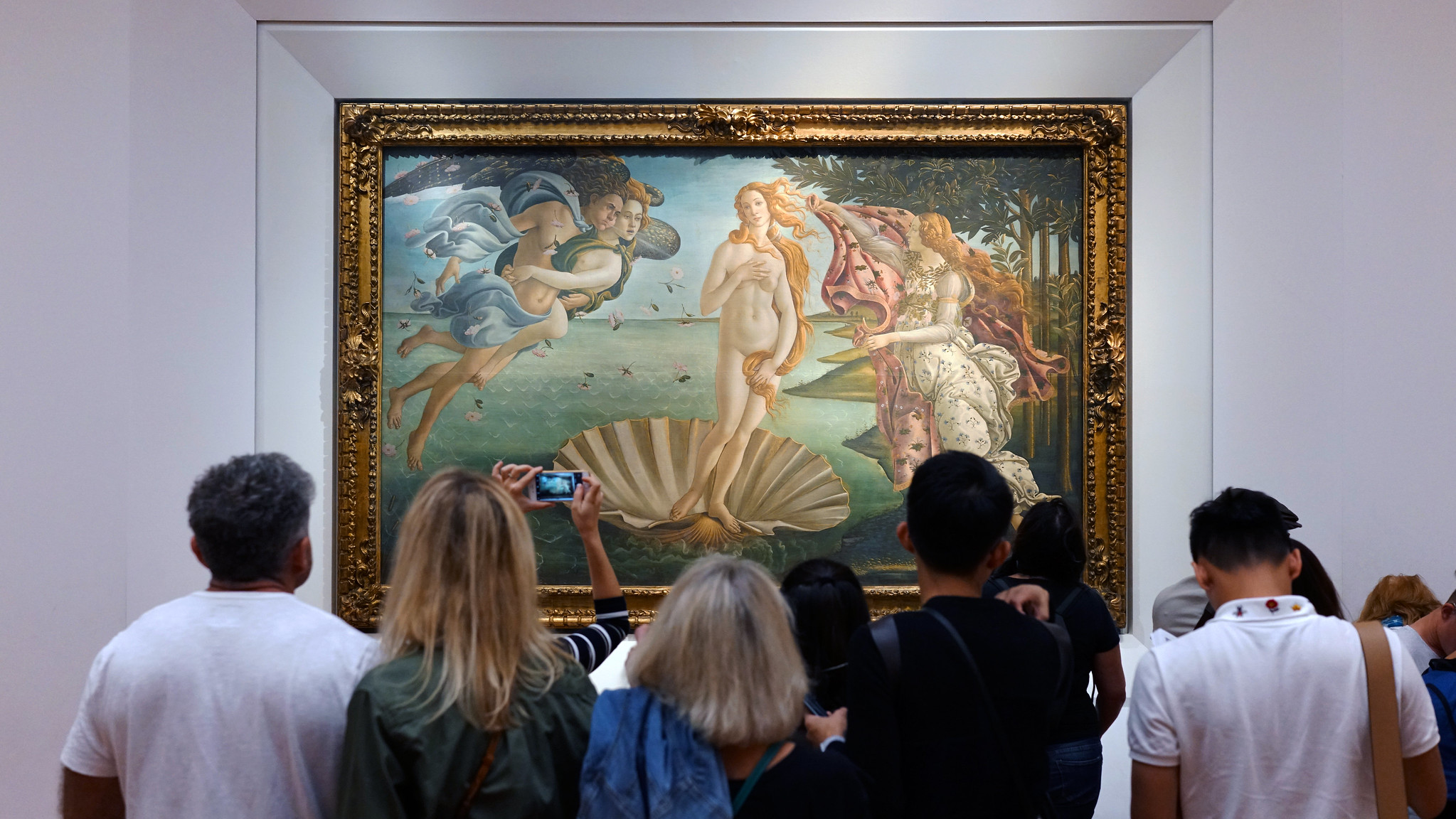
Sandro Botticelli, The Birth of Venus: This painting exemplifies secular subject matter and borrows from ancient tradition.
Read Now >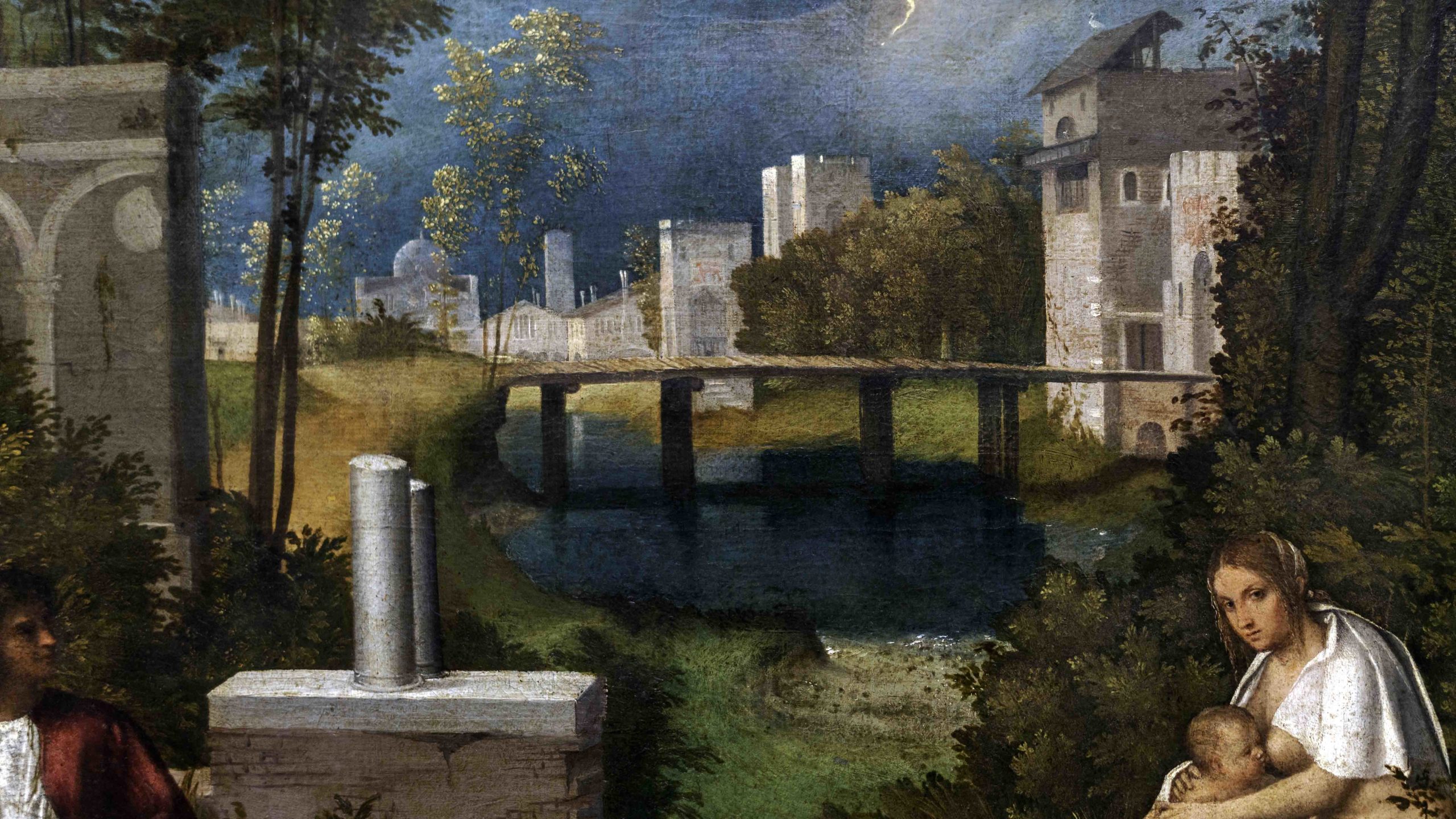
Giorgione, The Tempest:The Tempest is among the first paintings to be labeled a “landscape” in European art history.
Read Now >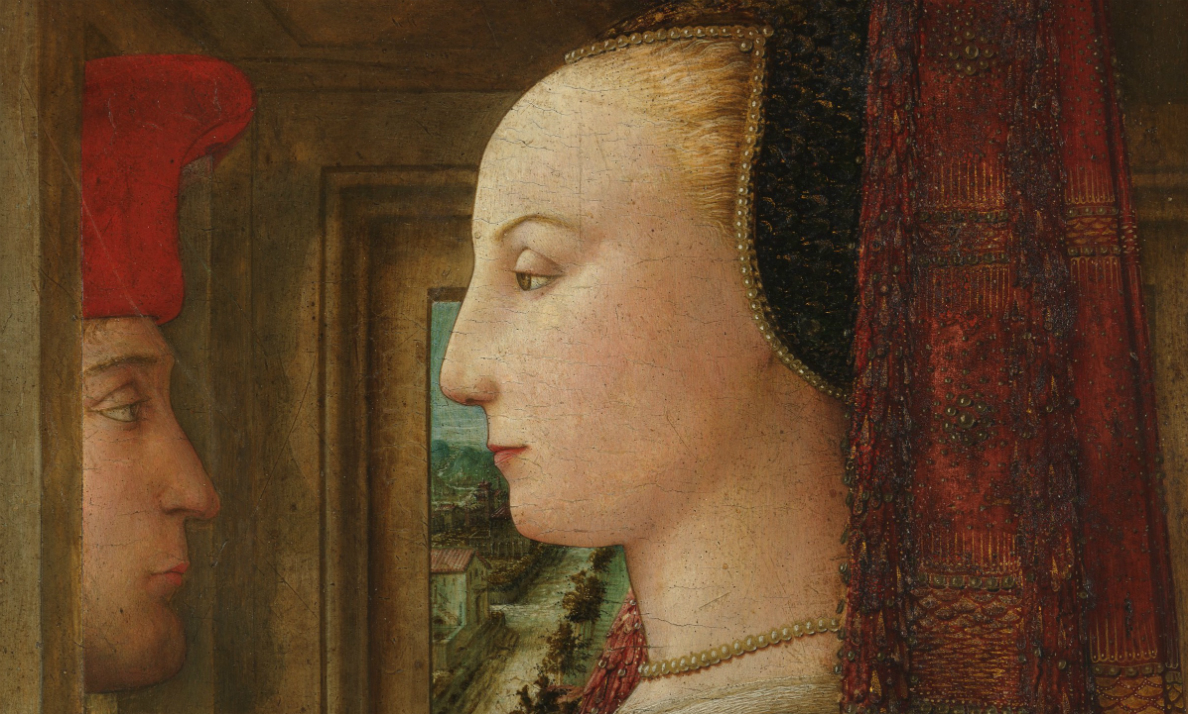
Fra Fillippo Lippi, Portrait of a Man and Woman at a Casement: At the time, good looks and pale skin signaled interior virtue and purity.
Read Now >/3 Completed
Bringing the Victory home
While the ancient Roman orator Cicero may have held that “Virtue is its own reward,” for renaissance Christians, virtuous living was rewarded with blessings in this life and salvation in the next. Scenes of military victories, always thought to be backed by the might of God, were popular in private homes, even in bedrooms. These images allowed allegiances and faith to be contemplated privately and shared with visitors—the renaissance home was a bustling site of social interaction.
Watch videos and read essays about scenes of military victories
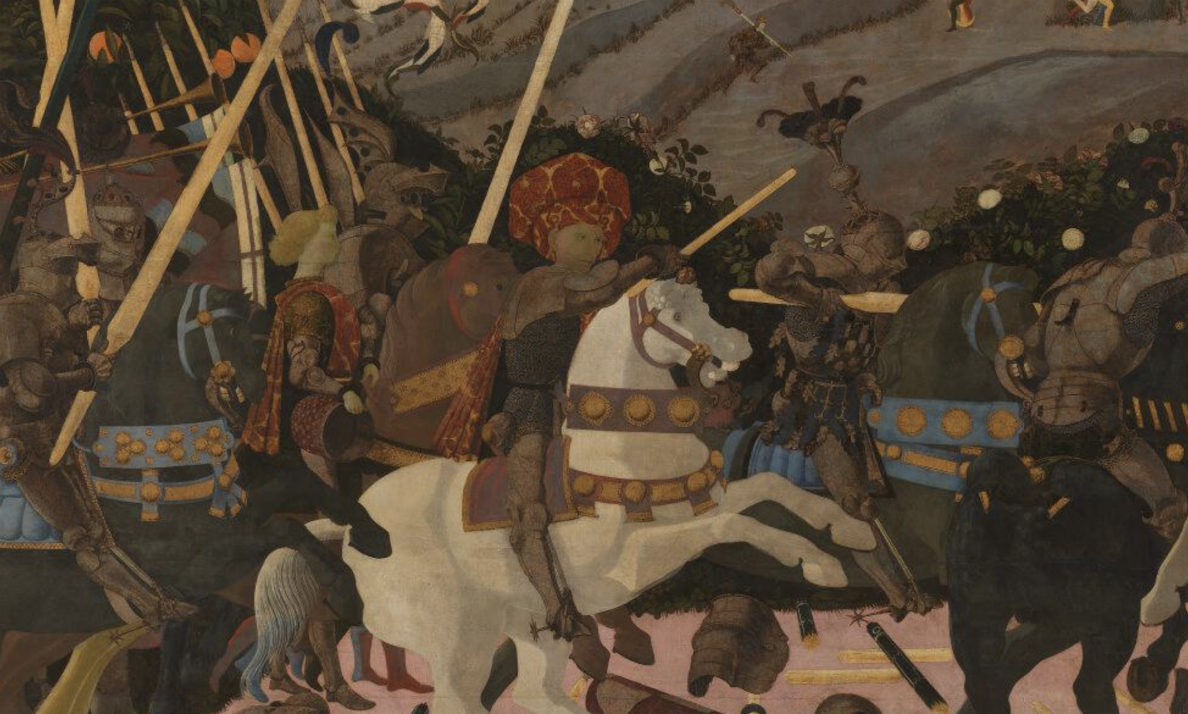
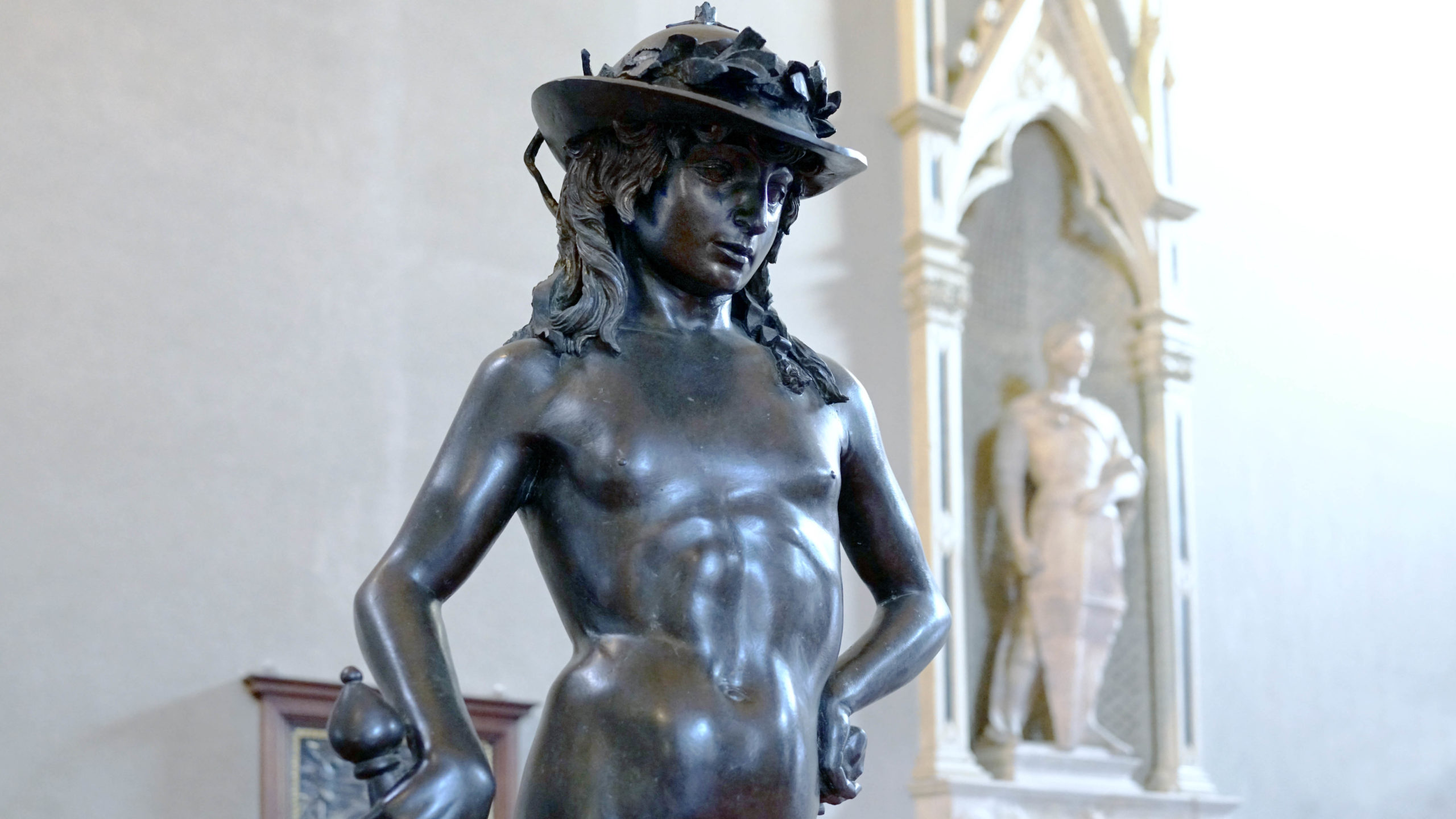
Donatello, David: By the time the bronze David was created, the hero was already a symbol of the Florentine Republic.
Read Now >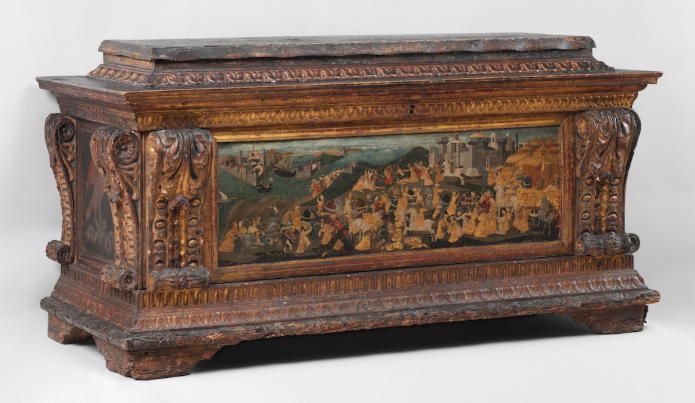
Cassone with the Conquest of Trebizond: This marriage chest depicts a contemporary historical event, the Conquest of Trebizond (in present-day Turkey).
Read Now >/3 Completed
Contemplating the Holy in the humanist home
Home is where the heart is. It is also where one may have their most intimate religious meditations. Humanist-inspired forms infused religious subjects with a palpable physical realism that enabled a deeply personal connection between viewers and the sacred characters depicted. Images of the Madonna and Child, of the Holy Family, of Saints, and biblical heroes were displayed in homes as sites of devotional practice and exemplary models of behavior.
Read an essay and watch a video about the holy in the humanist home
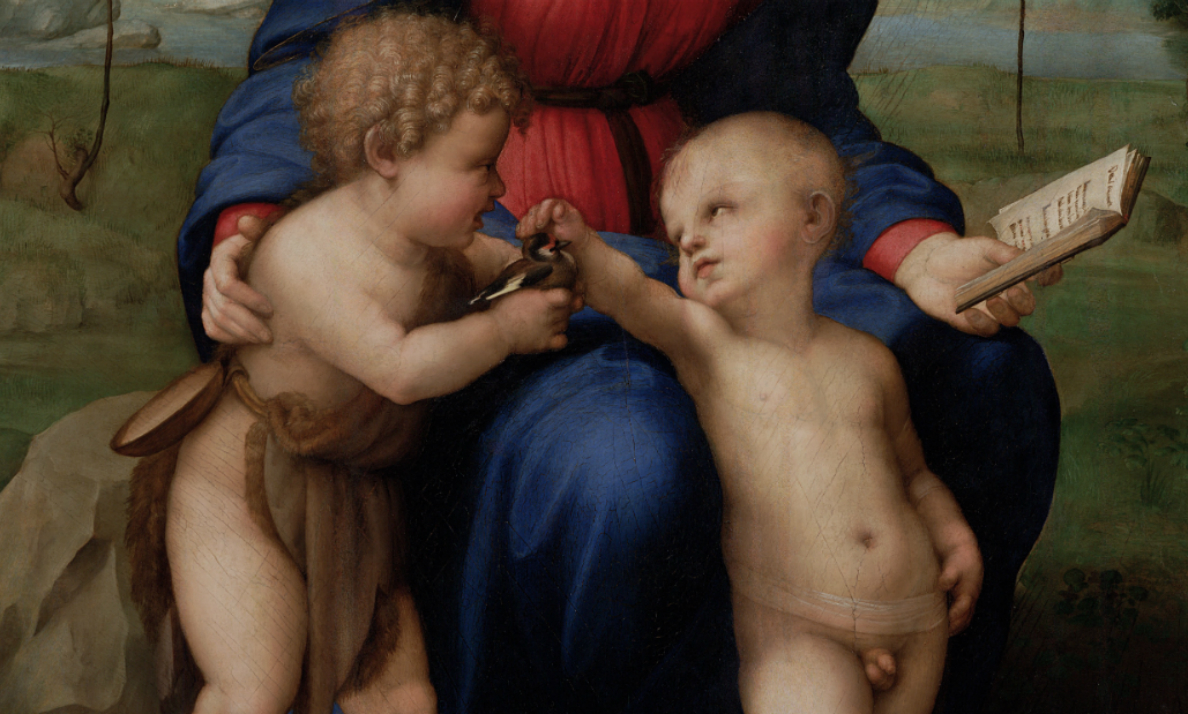
Raphael, Madonna of the Goldfinch: A painting visualizing the Virgin Mary, the Christ Child, and the infant John the Baptist.
Read Now >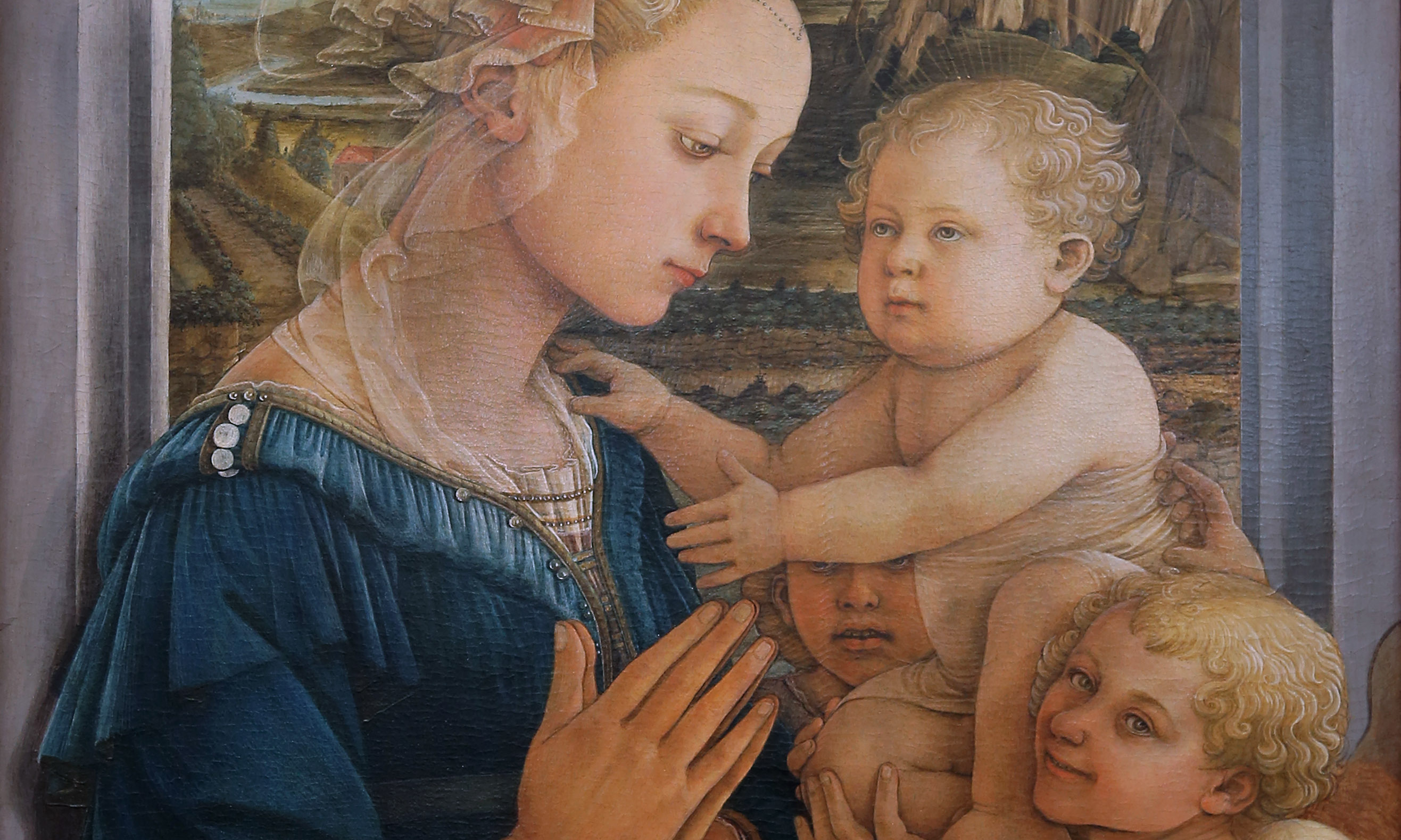
Fra Filippo Lippi, Madonna and Child with Two Angels: The delicate swirls of transparent fabric that move around Mary’s face and shoulders are a new decorative element that Lippi develops.
Read Now >/2 Completed
The contexts in which art is made and used are of foremost concern to the art historian. Our goal is not to frame artwork in terms of our own perceptions, but according to the world views of the original makers and audiences for art. As we have seen in this chapter, the political organization of a community has profound influence on the lived experiences of its people, the art that they produced, and the way that art was used. The climate of vibrant rivalry, experimentation, and innovation that characterized the world of the Italian renaissance republics is felt profoundly in its art.
Key questions to guide your reading
How was power divided in the renaissance republican city-states? What effect did this have on the production of art?
How was art in public spaces used to celebrate church and state? To promote individual families?
How did art in the private sphere function? What did the images and objects collected and displayed within the home say about the patron?
Jump down to Terms to KnowHow was power divided in the renaissance republican city-states? What effect did this have on the production of art?
How was art in public spaces used to celebrate church and state? To promote individual families?
How did art in the private sphere function? What did the images and objects collected and displayed within the home say about the patron?
Jump down to Terms to KnowTerms to know and use
aristocracy
capitalism
cassone
city-state
condottiere

